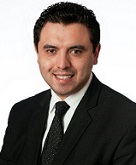 The string of shootings in Newtown, Aurora, and Oak Creek last year would make some reconsider establishing ‘stop-and-frisk’ policies in several violence-ridden U.S. cities. Most recently, an article by The Chicago Tribune’s Stephanie D. Neely on March 1, claimed that stop-and-frisk policies are needed in an attempt to curb gun violence in Chicago. According to Neely, 2,600 shooting incidents were reported to the Chicago Police Department, of which 400 resulted in homicide. In the wake of rampant violence, Neely claimed that:
The string of shootings in Newtown, Aurora, and Oak Creek last year would make some reconsider establishing ‘stop-and-frisk’ policies in several violence-ridden U.S. cities. Most recently, an article by The Chicago Tribune’s Stephanie D. Neely on March 1, claimed that stop-and-frisk policies are needed in an attempt to curb gun violence in Chicago. According to Neely, 2,600 shooting incidents were reported to the Chicago Police Department, of which 400 resulted in homicide. In the wake of rampant violence, Neely claimed that:
“It’s time for Chicago to be proactive and courageous. New York, Los Angeles, Boston, Pittsburgh and Kansas City have all had success cutting their rates of gun crime with a strategy called ‘stop-and-frisk.’ The idea is to target high gun-crime areas with increased patrols that specifically look for illegal guns. Police officers who are suspicious of a person are allowed to detain the person and lightly run their hands over the suspect’s outer clothing to determine if the person is carrying a concealed weapon.”
Neely went on to say:
“This is a plague on our city that requires a bold solution. Increased fines and longer prison sentences have never been much of a deterrent. These young men carrying illegal guns are bent on revenge with little thought to the consequences of their mayhem. Gun buybacks and other strategies recovered more than 70,000 guns in Chicago over the last five years, and yet our homicide total last year was higher than that of New York and Los Angeles, according to crime data.”
Neely’s conclusion proposes that stop-and-frisk is the only viable strategy “not because I like it or don’t recognize the larger social problems at play, but because we must solve this problem now and I have seen no other solution that works. The price of doing nothing is more dead young people.” Research shows that, unfortunately, the implementation of stop-and-frisk doesn’t help reduce crime or save lives. Instead, it leads to the racial profiling and criminalization of Latino and Black individuals — particularly the youth. According to the New York Civil Liberties Union, stop-and-frisk policies have led to illegal stops, the violation of privacy rights, and racial profiling. Nearly nine out of 10 stopped-and-frisked New York residents are innocent, according to New York Police Department accounts.
There are other, existing, evidence-based solutions that can stem gun violence without criminalizing the innocent and contributing further to the mass incarceration of Latino and Black communities. These programs address the underlying issues causing young people to make poor life choices and become involved in illicit activity in a way that stop-and-frisk policies don’t and can’t. In 2007, Connecticut ended the punishment of 16 and 17-years-olds as adults, turning a once punitive and often abusive juvenile system into a more humane and cost-effective apparatus according to a recently released study. Among Connecticut’s juvenile system achievements include the use of pre-trial detention centers and correctional training schools; community-based supervision and treatment programs for at-risk youth; and family-focused adolescent treatment, to name a few. The outcome of these judicial changes led to a reduction of juvenile’s population in Connecticut’s adult prisons from 403 in 2007 to 151 in mid-2012, as well as to an increase in adolescent treatment programs from $300,000 in 2000 to $39 million in 2009.
Furthermore, four states are following in Connecticut’s footsteps, according to a new report by the Justice Policy Institute. In addition to Connecticut, states such as Arizona, Minnesota, Louisiana, and Tennessee have reduced youth confinement by more than 50 percent between 2001 and 2010. The same report advises that other states should consider Connecticut’s model, in addition to other policymaking recommendations: (1) Recognize opportunities to push change; (2) settle litigation; (3) create and revamp current juvenile justice commissions; and (4) use experts for technical assistance.
Of course, these initiatives only refer to youth who are already in the system; however, promoting the treatment of at-risk youth by way of community-based programs, as well as therapeutic interventions rather than harsh punishment will curb incarceration. Moreover, the national discourse over gun control should also propel the conversation on stop-and-frisk policies and racial profiling.
For Neely, desperate times call for desperate measures. But justice implementation should not be done hastily and without considering the policy’s effect in the long and short terms, especially when other alternatives exist to reduce violence and mass incarceration at no additional cost to taxpayers and without compromising the dignity of innocent youth.
To sum it up, two wrongs just don’t make a right.
Robert Valencia is a New York-based foreign affairs analyst and is a contributing writer for the World Policy Institute and Global Voices Online. His research on U.S-Latin American relations, conflict resolution, U.S. Latino issues, human rights, and government accountability have been cited by Al Jazeera English, The Atlantic, Yale Journal of International Affairs, The Coalition for the International Criminal Court, the Henry Jackson Society, and the Center for American Progress. His comments are his own.

Recent Comments